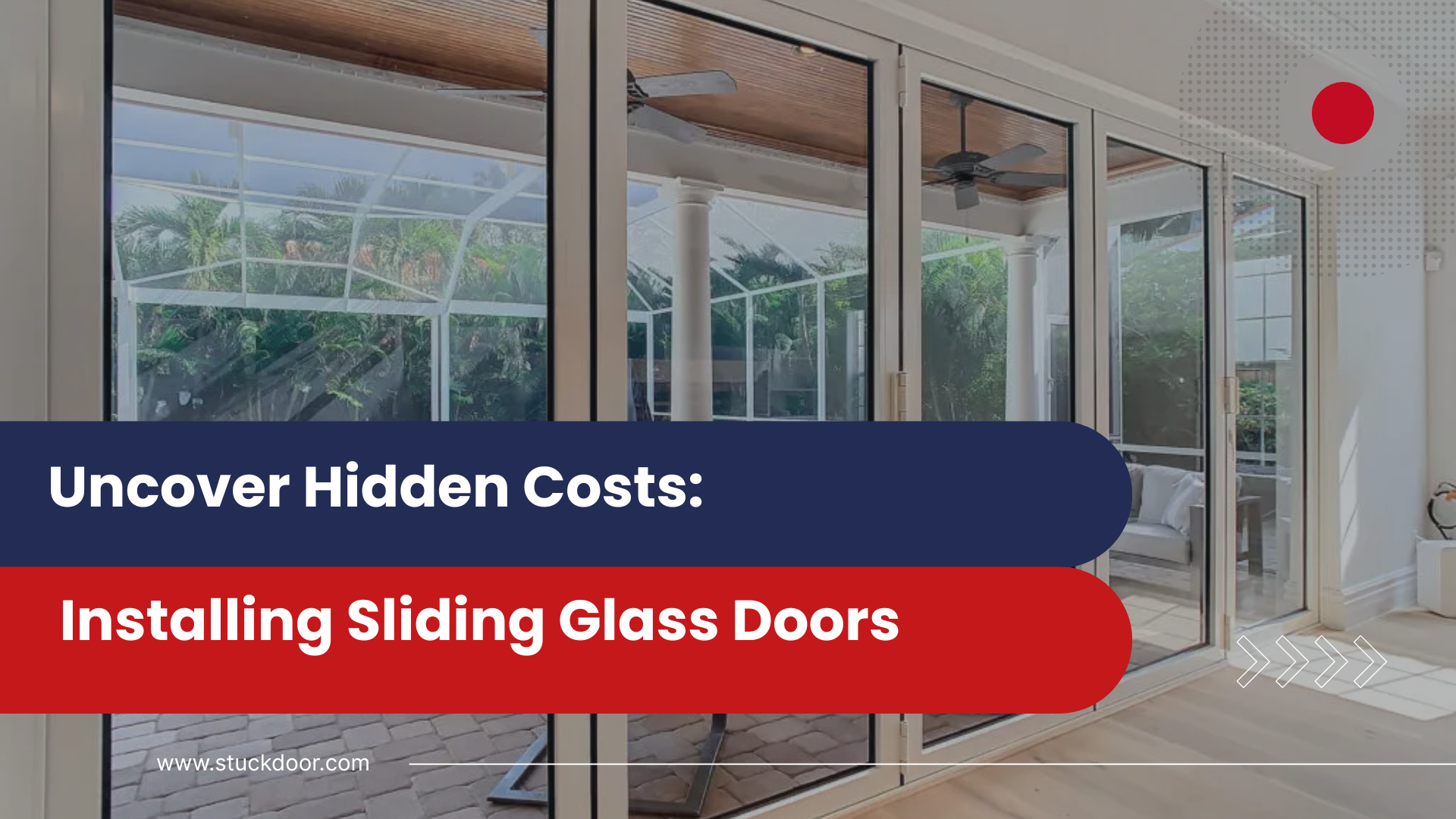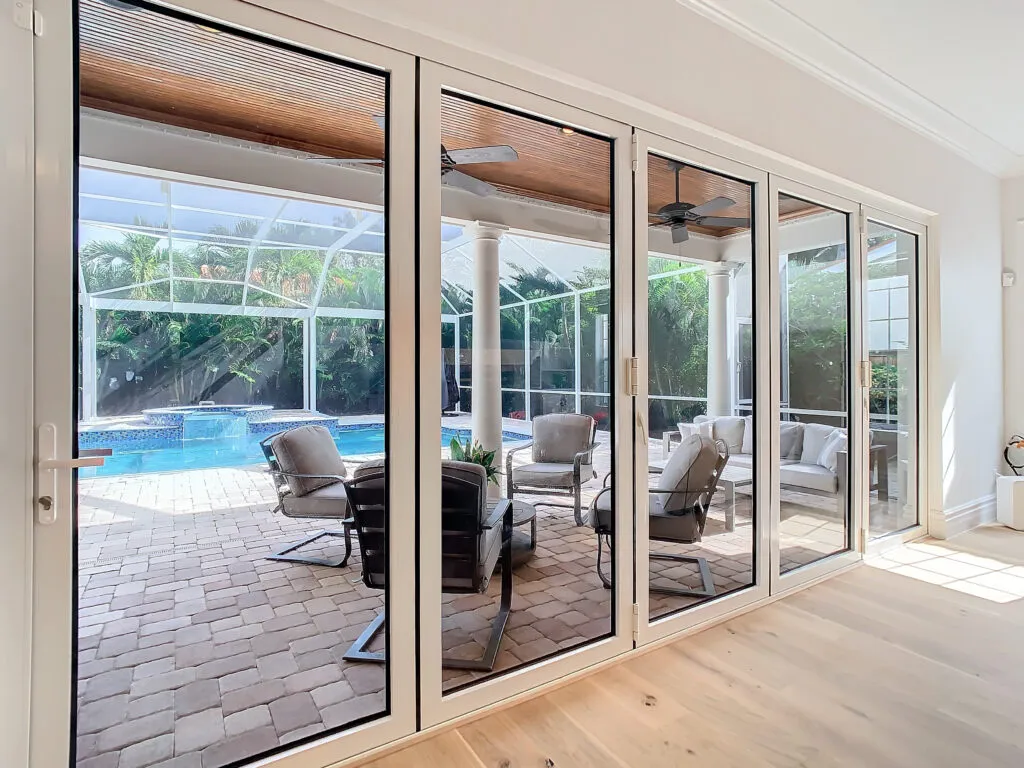

Sarah thought she had everything figured out. She’d gotten three quotes for her sliding glass door installation, carefully compared prices, and budgeted $3,500 for the project. Six weeks later, she was staring at a final bill for $5,200, wondering how costs had spiraled so far out of control.
Sound familiar? You’re not alone. Hidden sliding glass door installation costs catch thousands of homeowners off guard every year, turning what should be an exciting home improvement into a budget nightmare. The problem isn’t just that unexpected expenses arise – it’s that many contractors either don’t properly assess all the work involved upfront or aren’t transparent about potential additional costs.
Whether you’re getting your first quotes or trying to understand why estimates vary so widely, this guide will walk you through every potential cost so you can budget accurately and avoid those dreaded “change orders” that blow your budget.
Before diving into specific hidden costs, it’s crucial to understand why sliding glass door installation pricing seems to be all over the map. Unlike simple interior doors, sliding glass doors interact with your home’s structure, weather protection, and energy systems in complex ways.
Factors That Drive Cost Variations:
The contractors giving you rock-bottom quotes often haven’t accounted for these variables – or they’re planning to hit you with “unexpected” charges later.
This is where most homeowners get blindsided. What looks like a simple door replacement often requires significant structural work that contractors don’t always catch during initial estimates.
Common Structural Issues:
Why This Gets Missed: Many contractors provide quotes based on “ideal conditions” without thoroughly inspecting your existing structure. Once they start removal, problems become apparent.
Red Flag Warning: Be extremely wary of any contractor who gives you a firm quote without removing trim and thoroughly inspecting the existing opening.
Professional sliding glass door installation typically requires building permits, but many contractors conveniently forget to mention this during initial pricing discussions.
Typical Permit Costs:
The Inspection Process: Most installations require at least two inspections – rough framing and final. Some jurisdictions require additional electrical or energy compliance inspections.
Budget Impact: Total permit and inspection costs typically add $300-$800 to your project, money that’s often not included in initial quotes.
Removing an old sliding glass door creates more waste than most homeowners realize, and disposal costs can quickly escalate if not properly planned.
What Needs Disposal:
Typical Disposal Costs:
The DIY Trap: Some contractors offer lower quotes by making disposal “your responsibility,” but homeowners often underestimate the logistics and costs involved.
This is where the difference between cheap and professional installation becomes most apparent. Proper weatherproofing requires specific materials and techniques that budget contractors often skip.
Essential Weatherproofing Elements:
Long-Term Cost Impact: Skipping proper weatherproofing to save $500 upfront often leads to thousands in water damage repairs within 2-3 years.
Quality Indicators: Professional installers use integrated flashing systems and closed-cell foam insulation, while budget contractors often rely on basic caulk and fiberglass insulation.
Many sliding glass door installations require electrical work that’s not immediately obvious during initial quotes.
Common Electrical Needs:
Code Compliance: Recent electrical codes often require GFCI protection for outlets within 6 feet of sliding doors, especially those leading to outdoor areas.
The area around your new door rarely looks perfect after installation, and finishing work can add significant costs if not planned properly.
Typical Finishing Costs:
The Matching Challenge: Finding trim and flooring materials that match existing finishes often costs more than anticipated, especially in older homes.
While not always required, energy efficiency improvements are often recommended during installation and can significantly impact your budget.
Common Energy Upgrades:
ROI Considerations: These upgrades often pay for themselves through reduced energy costs, but they represent significant upfront investment not always included in base quotes.
Labor costs for sliding glass door installation can vary dramatically based on factors that aren’t always apparent during initial estimates.
Factors That Increase Labor Costs:
Typical Labor Breakdown:
Your location significantly impacts installation costs in ways that go beyond simple labor rate differences.
Regional Variables:
Seasonal Pricing: Installation costs often fluctuate by 15-25% between peak and off-peak seasons.
Getting transparent, comprehensive quotes requires asking the right questions and understanding what separates thorough contractors from those cutting corners.
Essential Questions for Contractors:
Red Flags to Avoid:
While DIY installation might seem like a money-saver, the hidden costs and risks often make professional installation the more economical choice.
DIY Hidden Costs:
Professional Installation Value:
The Risk Factor: Installation mistakes can compromise your home’s structural integrity and weather protection, leading to costs that far exceed professional installation fees.
Understanding your financing options can help you plan for the total investment while avoiding budget stress.
Common Financing Approaches:
Budget Planning Tips:
While focusing on costs is important, understanding the long-term value helps put the investment in perspective.
Typical ROI Factors:
Quality Installation Premium: Investing an extra 15-20% in professional installation typically prevents 3-5x that amount in future repair costs.
Understanding hidden sliding glass door installation costs isn’t about finding the cheapest option – it’s about making informed decisions that protect your investment and avoid unpleasant surprises. The contractors who provide comprehensive, transparent quotes upfront are typically the ones who deliver quality results without change orders.
When you know what to expect, you can budget appropriately and choose contractors based on value rather than just price. Remember, the goal isn’t just getting a door installed – it’s getting it done right, on budget, and with confidence that it will perform beautifully for decades.
Ready for transparent, comprehensive pricing without hidden surprises? Visit StuckDoor.com to connect with professionals who believe in upfront honesty and deliver exceptional value through quality installation and comprehensive warranties.
Strategic Details Used:
Primary Keyword: “sliding glass door installation costs” Secondary Keywords: “hidden installation fees,” “sliding door replacement cost,” “professional door installation pricing,” “sliding glass door labor costs” Target Audience: Homeowners researching installation costs, getting quotes, and trying to understand pricing variations Content Goals: Position StuckDoor.com as a transparent, trustworthy service provider that provides comprehensive quotes without hidden fees and delivers quality installation that prevents costly future problems
Stuck Door helps fix and install sliding doors in Winter Garden, Clermont, Windermere, and across Central Florida. Our friendly expert technicians have years of experience making sure homes and businesses have reliable doors that work perfectly.
Windermere • Doctor Phillips • Lake Nona • Winter Garden • Clermont • Minneola • Groveland • Ocoee • Apopka • Winter Park • Maitland • Kissimmee • Horizon West • Altamonte Springs
Sliding glass door experts, built for Florida homes—call us today.